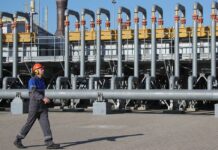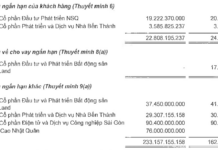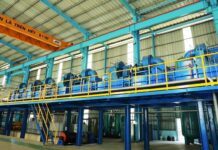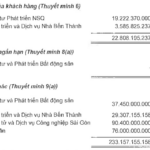On the outskirts of Chongqing, western China’s largest city, stands a monument to the country’s excess automotive manufacturing capacity. It is a gray complex covering nearly a square mile that once employed thousands of workers but now sits largely deserted, its scarlet loading docks silent for days on end.
The site was a joint venture between a Chinese company and Hyundai of South Korea that assembled and produced engines. The complex opened in 2017, filled with robots and other advanced equipment to build gasoline-powered cars, only to be quietly sold off late last year by Hyundai for a fraction of its original $1.1 billion investment.
“It was supposed to be fully automated, but now it’s a ghost town,” said Chu Zhehui, 24, who works for the rival Chinese automaker Chang’an and has an apartment overlooking the former Hyundai complex.
China has more than 100 factories capable of producing nearly 40 million internal combustion engine vehicles a year. That is roughly double what Chinese consumers are buying, especially as electric cars become more popular.
Last month, for the first time, sales of electric and hybrid vehicles surpassed those of gasoline-powered cars in China’s 35 largest cities. Dozens of factories that once churned out traditional vehicles have been shuttered as the electric vehicle, or E.V., revolution gathers pace.
About three-quarters of China’s vehicle exports are gasoline-powered models that are no longer in demand domestically, said Bill Russo, an automotive consultant in Shanghai. But slowing sales growth caused by slackening demand has made it harder to move them overseas.
There is also significant excess capacity in electric vehicle production in China, though to a lesser extent than for gasoline-powered cars. That has led to a game of price chicken as manufacturers try to unload inventory.
In a single week, the Chinese joint venture of Volkswagen cut the price of its ID.3 electric car by 18 percent. Chang’an Automobile, one of China’s state-owned automakers, is offering discounts of $3,000, free charging and other incentives on its electric vehicles. BYD, the country’s largest E.V. maker, recently announced its second price cut in a month on some of its older models.
“The magnitude of this pricing cycle is something I’ve never seen before,” said Tu Le, the chief executive of the consulting firm Sino Auto Insights in Beijing, who has worked in both the Chinese and American auto industries for a quarter-century.
Kevin Yang, 29, visited a Volkswagen dealership in Chengdu last month to look at electric cars. He was struck by the desperation of the sales staff, who hung around until closing time badgering Mr. Yang to take a test drive. Calls with increasingly attractive discounts followed.
“The competition right now is really fierce,” Mr. Yang said.
In China, nearly all the country’s electric vehicles are being built in new factories rather than converted from existing internal combustion facilities, which is compounding the problem of excess capacity, The New York Times reported.
“The Chinese auto industry is going through an E.V. revolution. The old I.C.E. capacity is dying,” said John Zeng, the Asia forecasting director for LMC Automotive, a research firm.
Sales of gasoline-powered vehicles have plunged to 17.7 million last year from 28.3 million in 2017 — the year Hyundai opened its complex in Chongqing. Hyundai’s own sales in China have fallen 69 percent since 2017.
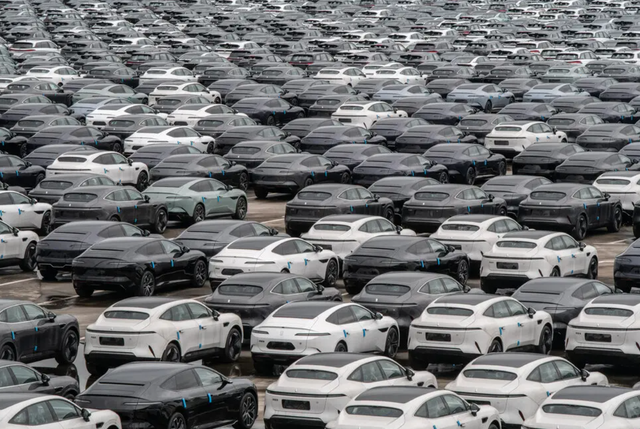
Global automakers have been cutting production in China.
Global automakers have been cutting production in China. Ford Motor, which has three factories in Chongqing, has been running them at a fraction of their capacity for the past five years. Hyundai is one of the few automakers that have decided to stop production altogether at some of their sites.
It used to be that auto factories in China operated at 80 percent of capacity or more to be efficient. But that figure fell to 65 percent in the first three months of this year, down from 75 percent a year earlier, according to China’s National Bureau of Statistics.
China’s electric-car market boomed after 2020, aided in part by government subsidies, The New York Times reported. But a brutal price war has erupted in the segment as those incentives have been phased out over the past 13 years.
Chinese automakers have been forced to slash production and cut jobs. Chang’an, the state-owned automaker, has a factory about a 20-minute walk from the former Hyundai complex. Its vast parking lot is filled with unsold inventory that has been sitting there for months.
Cities that are heavily dependent on gasoline-powered car manufacturing, like Chongqing, face a jobs dilemma. Electric vehicles require fewer workers to assemble than gasoline-powered cars because they have far fewer parts.
Workers with strong technical backgrounds, especially in robotics, can often find new jobs relatively easily if they are laid off. But the challenge is greater for less-skilled workers, especially older ones who have not been trained for anything else.
By The New York Times, WSJ



